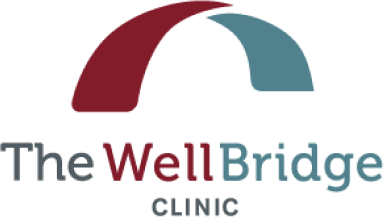
Acupuncture for Chronic Neck Pain
A systematic review and meta-analysis conducted by Vickers et al. (2018) examined acupuncture’s effectiveness for chronic neck pain. The study analyzed data from 100’s randomized controlled trials (RCTs), and over 20,000 individual patients and they found that acupuncture significantly reduced pain intensity and improved function compared to usual care or “sham” (aka: Placebo) acupuncture. The researchers concluded that acupuncture is a viable option for managing chronic neck pain, providing moderate-to-long-term relief (Vickers et al., 2018) with relief that lasts longer.
Similarly, a randomized controlled trial by Tough et al. (2009) assessed the effectiveness of acupuncture in patients with chronic neck pain. Participants who received acupuncture reported significant improvements in pain reduction, range of motion, and overall well-being compared to those receiving standard care. The study further highlighted acupuncture’s role in reducing the need for pain medication.
Acupuncture in Clinical Guidelines for Neck Pain
The American College of Physicians (ACP) and other medical organizations have recognized acupuncture as a recommended treatment for neck pain. Clinical practice guidelines suggest that patients with chronic neck pain should consider nonpharmacologic treatments, including acupuncture, before turning to medication. These recommendations are based on growing evidence supporting acupuncture’s effectiveness in pain relief and functional improvement (Qaseem et al., 2017).
Acupuncture for Whiplash Injuries
Whiplash-associated disorders (WAD) are a common consequence of motor vehicle accidents, characterized by neck pain, stiffness, headaches, and sometimes dizziness. A systematic review by Tough et al. (2006) evaluated acupuncture’s role in treating whiplash-related pain and found significant pain relief and improved mobility in patients who received acupuncture treatments. The study suggested that acupuncture is an effective therapy for whiplash injuries following car accidents, sports injuries, and repetitive stress patterns.
A clinical trial by Irnich et al. (2001) compared acupuncture with conventional physical therapy for whiplash injuries. Patients in the acupuncture group reported greater pain relief and improved range of motion than those receiving physical therapy alone, demonstrating acupuncture’s potential to enhance recovery following a whiplash injury. This is a good reminder to have a balanced team of health care providers that include Physical Therapy and Acupuncture.
Why Acupuncture Works
Acupuncture’s effectiveness for neck pain and whiplash is believed to be due to several physiological mechanisms. Research suggests that acupuncture:
- Stimulates the release of endorphins and neurotransmitters, reducing pain perception.
- Enhances blood circulation, promoting tissue healing and reducing inflammation.
- Relaxes tight muscles and alleviates tension, improving mobility and comfort.
- Modulates the nervous system to reduce pain sensitivity and improve overall function.
Conclusion
The evidence supporting acupuncture for neck pain and whiplash is compelling. Over 50 years of modern research, and 3000 years of practice have demonstrated that it can significantly reduce pain and improve function, making it a valuable option for those seeking alternatives to medication or invasive procedures. With endorsements from major medical organizations and positive findings from systematic reviews, acupuncture continues to gain recognition as an effective treatment for these common conditions.
References
- Irnich, D., Beyer, A., Sudeck, G., & Krauss, M. (2001). Randomized trial of acupuncture compared with conventional massage and “sham” laser acupuncture for treatment of chronic neck pain. BMJ, 322(7302), 1574-1578. https://doi.org/10.1136/bmj.322.7302.1574
- Qaseem, A., Wilt, T. J., McLean, R. M., & Forciea, M. A. (2017). Noninvasive treatments for acute, subacute, and chronic low back pain: A clinical practice guideline from the American College of Physicians. Annals of Internal Medicine, 166(7), 514–530.https://doi.org/10.7326/M16-2367
- Tough, E. A., White, A. R., Cummings, T. M., Richards, S. H., & Campbell, J. L. (2009). Acupuncture and dry needling in the management of myofascial trigger point pain: A systematic review and meta-analysis of randomized controlled trials. European Journal of Pain, 13(1), 3-10. https://doi.org/10.1016/j.ejpain.2008.01.011
- Vickers, A. J., Vertosick, E. A., Lewith, G., MacPherson, H., Foster, N. E., Sherman, K. J., & Linde, K. (2018). Acupuncture for chronic pain: Update of an individual patient data meta-analysis. The Journal of Pain, 19(5), 455-474. https://doi.org/10.1016/j.jpain.2017.11.005

